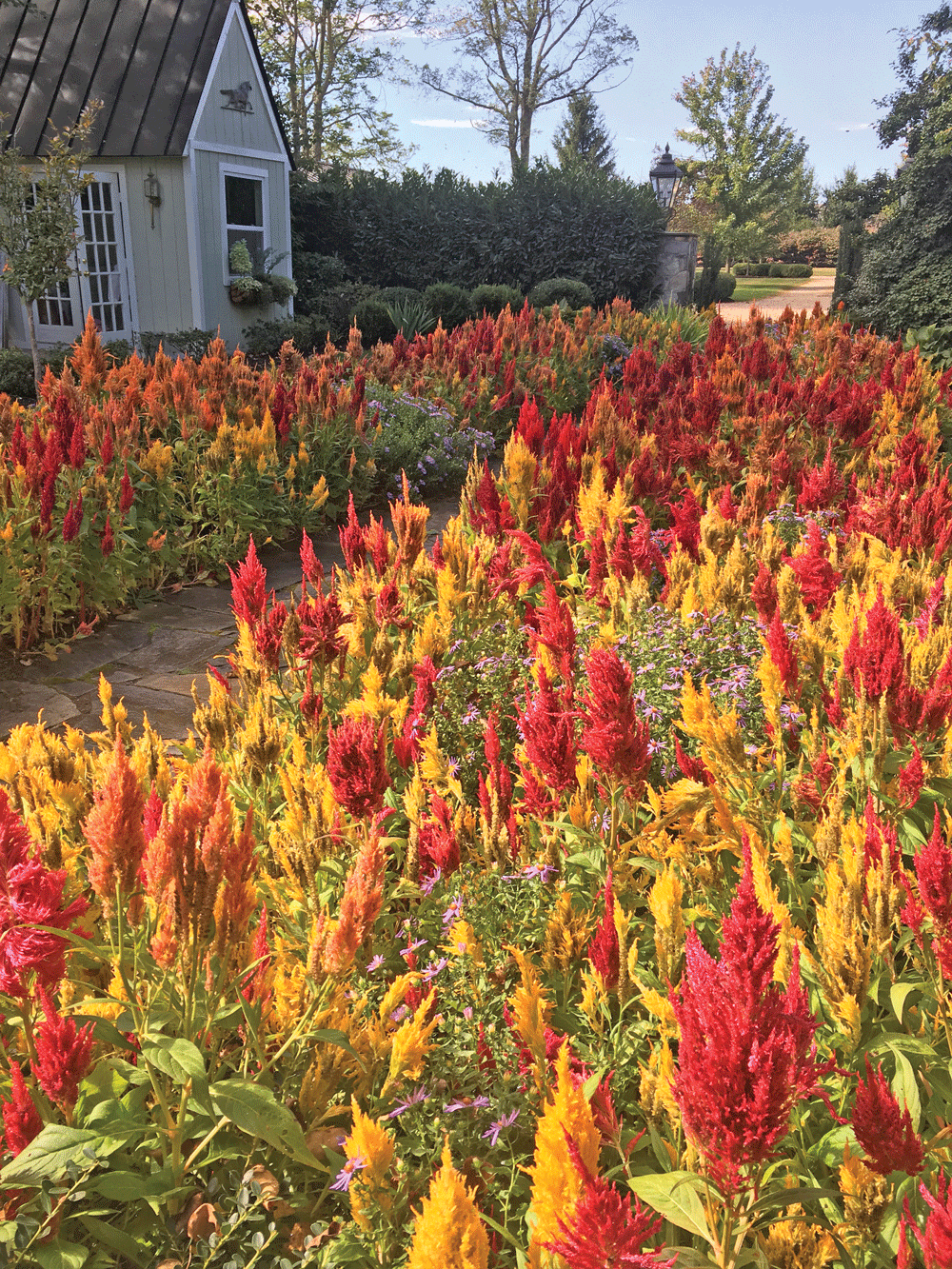How Does Your Garden Grow?

I love coming home at the end of summer to my flower path. Every year they get better and better. For this, I have weddings to thank. The celosia was planted for my brother’s wedding and has self-seeded every year. The asters were planted for our friend’s wedding and have ballooned in size and girth. The Montauk daisies were planted to remind me of our own Lake Tahoe wedding. There is something about planting in mass quantities for special occasions that is visually appealing and comforting. An added benefit is the annual flowering of happy memories.

However, this year, after five weeks away, the flower path had suffered. The asters and Montauk daisies thrived but the celosia, once full and lush, became spindly and brown. My dense plantings gave way to gaps of dirt, expanding like puddles. My neighbor, Kate, left a bucket of pink celosia on my porch. After I complimented her on her gorgeous blooms, she wrote, “Garden far from beautiful. Clearing celosia but sympathetic to its vigor. Seeds going in.” Her note reminded me that gardens fall to ruin if not properly tended. Soil conditions change depending on the climate, and this year we had rain followed by drought followed by a lot of rain. So much that by mid-August, Middleburg had received a full year’s average rainfall.
Green is the norm for us in the Virginia Piedmont. In Marta McDowell’s All the Presidents’ Gardens, Jackie Kennedy contrasts the lush Middleburg countryside of their weekend retreat with the dry White House grounds: “It is driving the President crazy, and I agree with him. In Glen Ora where we have a man who cuts the lawn every two weeks, it looks like green velvet – and this place looks as well as cornfields in Virginia.”
With everything so lush in the spring, I had turned to new gardens, and sadly, took the old ones for granted. Confident that my self-seeding celosia – generally considered an annual – would be forever fine with mulch and the rain, I neglected to add seeds or rip it out and start anew.
Maintenance is just as important as the design. Without the watchful eye, and digging of the spade, lots can go wrong. Luckily, my magical-thinking Aunt Faye came from Florida for a month and noticed the neglect. There were weeds in the beds. The phlox had white mold. The aphids had made a home on the roses. The cherry tree had Japanese beetles. She quickly got to work, clearing out and weeding. Cutting back the phlox. Adding fertilizer to the roses. And adding her special touches of bird feeders and more milkweed for the monarchs which now flutter around by the dozen. Our two steers appreciated her daily gathering of fallen apples to toss in the paddocks.
Aunt Faye made progress, and with the changing of the seasons there is always a chance to start anew. I opened my garden books to see what I could do to improve. I was comforted reading Piet Ouldolf’s woes upon removing his famous cloud yew hedges on his own property after a heavy spring rain had left them waterlogged and brown. Cutting them down gave him a blank canvas for a new plan which he promptly filled in with grasses and perennials.
The empty spaces in my flower path could now make room for fall bulbs, which were always a challenge to get in. I’ve ordered foxtails (Eremurus romance) for height and drumstick alliums (Sphaerocephalon) for naturalizing, and expect our usual hundreds of daffodils to come up in the spring. More asters will also go in this month for spectacular beauty this fall and next year. David Lohmann, owner of Abernethy & Spencer Greenhouses, suggests planting Helenium, Sedum, Montauk daisies and Korean mums now. For the bees and butterflies, he also recommends the asters, and Caryopteris for their blue flowers and nectar.
Ouldolf’s book Hummelo also notes the North American grasses Panicum, Schizachyrium, and Sporobolus, which are deer resistant. “The Blues,” a strand of Schizachyrium, is all over the High Line in New York for its fall color. David recommends the non-invasive “Shenandoah” switch grass instead for its autumn flame and year round interest.
Gertrude Jekyl once wrote, “Let no one be discouraged by the thought of how much there is to learn.” You don’t need a special occasion to put in some new mass plantings to delight this fall and next spring. Let this fall be one of learning. Of striving to do more, and taking care of what you have.
Story and photo by Ashley Bommer Singh.
This article first appeared in the September 2018 Issue.








